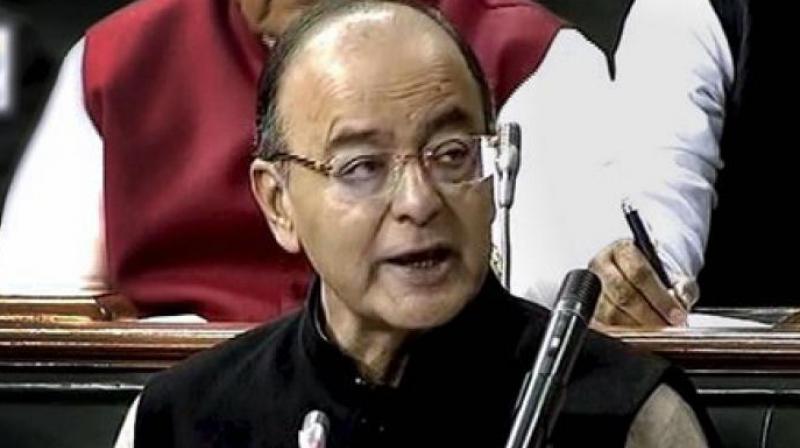Union budget promotes value addition of food products
Food has also been one of the largest segments in India's retail sector, which was valued at $490 billion in 2013.

The recent central economic survey reveals that agriculture sector will attain a growth rate of 4.1 percent in the country by 2016-17 FY. The 2017-18 Union budget proposals have given more emphasis to post-harvest technology and value addition in agriculture. A sum of Rs 10 lakh crore has been earmarked for providing agriculture credit. The budget has proposed integration of farmers who grow fruits and vegetables with agro-processing units for better price realisation and reduction of post-harvest losses. A model law on contract farming would be prepared and circulated among the states for adoption. Moreover, since a large number of milk processing units set up under the Operation Flood Programme have become old and obsolete, a dairy processing and infrastructure development fund would be set up in association with NABARD with a corpus of Rs 8,000 crore over three years. To make MSME companies more viable, income tax for companies with annual turnover up to Rs 50 crore has been reduced to 25 percent.
Moreover, 5% reduction in the service taxes of MSME has been proposed in the budget which addressed basic issues in agriculture like irrigation, soil health, funding, value addition and market. A total of 187000 lakh crore has been allotted to the agriculture sector which is 24 percent higher than that of the current year. It has been envisaged to double the income of farmers by 2022. For this, production and productivity need to be increased in tune with the market demand. Without assessing the soil health, it is difficult to increase production. The budget proposes to establish laboratories for popularising the concept of soil health card. A sum of Rs 10 lakh crore has been allotted for agri-credit for 2017-18. A separate programme in association with NABARD for promoting irrigation will facilitate the concept of per-drop-more-crop in the farming sector. Post-harvest technologies will help to increase income from agriculture. As a sequel to demonetisation, e-marketing facilities will be extended from 260 to 580 to market the products during the next financial year.
It has been decided to integrate primary agriculture co-operative societies (PACS) and district co-operative banks in the core banking which will facilitate rural credit system. Moreover, according to the finance minister, 40 per cent of small and marginal farmers rely on PACS. NABARD will support this programme. The dairy processing infrastructure development fund announced in the budget will help to modernise the dairy industry, including establishment of dairy processing sectors. Since India is the largest milk producing country in the world, improving value addition in dairying will facilitate spectacular growth in dairy industry. Entrepreneurship and skill development programmes based on market demand will create employment opportunities in the agri and allied sectors. The skill acquisition and knowledge awareness for livelihood promotion programme will provide market relevant training to youth. This will enable entrepreneurship with a focus on job creation.
The Indian food industry, which is currently valued at US $39.71 billion, is expected to grow at a compounded annual growth rate of 11 per cent to US $ 65.4 billion by 2018. Food and grocery account for around 31 per cent of India's consumption basket which accounts for about 32 per cent of the country's total food market. The Indian food and grocery market is the world's sixth largest with retail contributing 70 per cent of the sales. Food has also been one of the largest segments in India's retail sector, which was valued at US $ 490 billion in 2013. The Indian food retail market is expected to reach '61 lakh crore by 2020. With the onset of demonetisation, e- commerce and digital marketing are acquiring momentum across the globe. Organized food business in India is worth US $ 48 billion, of which food delivery is valued at US $ 15 billion.
The Agricultural and Processed Food Products Export Development Authority is mandated with the responsibility of export promotion and development of fruits, vegetables and their products, meat and meat products, poultry and poultry products, dairy products, confectionery, biscuits and bakery products, honey, jaggery and sugar products, cocoa and its products, chocolates of all kinds, alcoholic and non-alcoholic beverages, cereal and cereal products, groundnuts, peanuts and walnuts, pickles, papads and chutneys. According to Sample Survey Office, Indians continue to spend a large percentage of their income on food with rural Indians spending 57 per cent and urban residents spending 44 percent. The budget proposal to establish a new and restructured central scheme with a focus on export infrastructure, namely, trade infrastructure for export scheme will try to address Indian exporters who face huge challenges in terms of infrastructure, particularly in states.
(Writer is the Director of Entrepreneurship at Kerala Veterinary and Animal Sciences University, Pookode, Wayanad).

